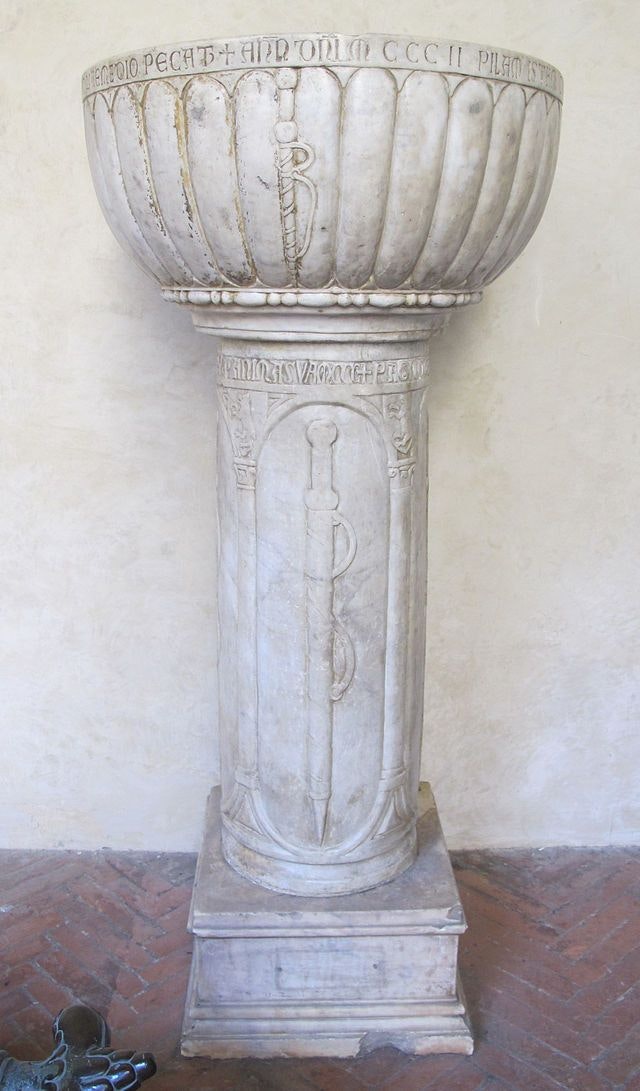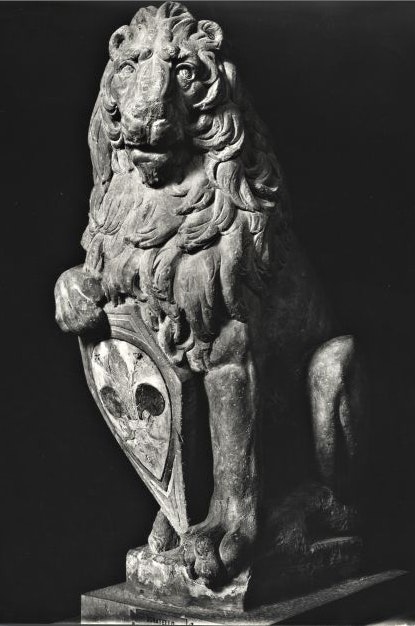Many know at a glance the great works that are located in Santa Maria Novella; these have helped to rewrite the history of world art. Some works are less known and yet are no less important and valuable.
This does not mean that the interior of the Basilica is not rich in numerous works of art belonging to a lasting period of time (from the Middle Ages to the nineteenth century). The fortune of the Basilica took place mainly during the long period of time that Vasari so-called “Renaissance”* with authors like Giotto, Masaccio, Ghirlandaio, Botticelli and many others.
Not all the works are however accessible to visitors and worshipers who walk through the naves of the ancient Basilica. Despite the majority of the works are displayed inside the complex, others are temporarily being restored either on site and elsewhere in specialized institutions. Some of these have recently been re-discovered by the restorers after hundreds of years under the superficial layers of the walls (but soon will be exhibited to the public). Others lie in the warehouses of the adjacent convent waiting for the right location to be exhibited.
However, not everyone knows which ones are the works that you will ever see anymore (or so) in the Basilica. Some of them have disappeared centuries ago for various reasons (not least the sale or raid in war time), some are exhibited in other important national and international museums or private collections. In the worst cases they are now irremediably lost. But then what are the major works which now reside outside the magical (and sadly unique) context of Santa Maria Novella?
These are some of the artworks once in Santa Maria Novella of which we know the attribution and the actual position. There are still many valuable pieces which are rather abroad, stolen in Napoleonic times or wartime and never recovered. Others are being restored and will be displayed as soon as the studies on these pieces are completed. We hope to have soon news of these works waiting for their right visibility.
* The Renaissance period for Vasari started earlier than the official period, widely attested with the discovery of America (1492).
The Madonna Rucellai also known as the Laudesi’s Madonna representing a Madonna and Child Enthroned (so-called a “Majesty”) and six angels painted by Duccio. This is a tempera painting on wood and it measures 4,50×2,90 metres.
Now it is located at the Galleria degli Uffizi located displyaed in a great room along with other majesties: the Santa Trinita Maestà by Cimabue and Giotto’s Madonna Ognissanti.
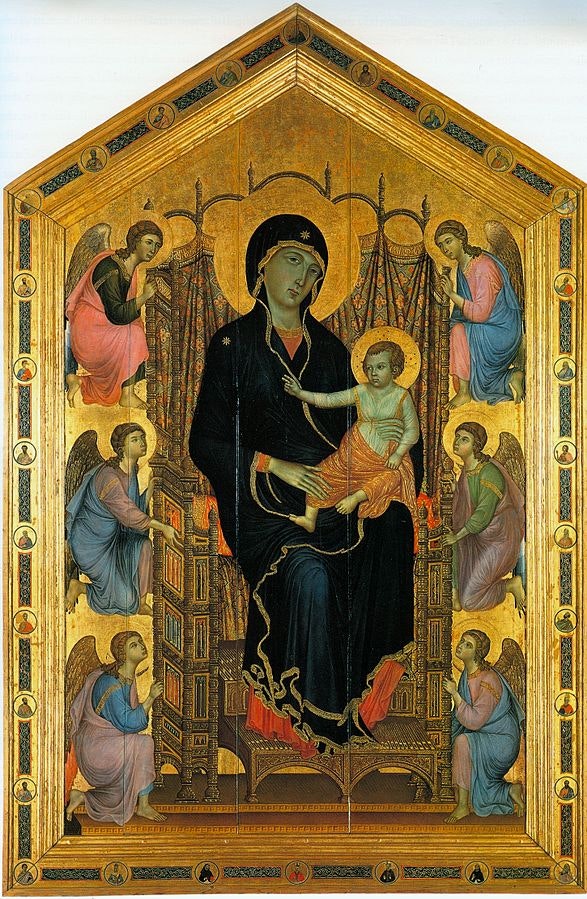
The triptych Madonna and Child Enthroned with Angels and Saints is a painting in tempera and gold leaf on canvas (159×198 cm) by Agnolo Gaddi dated 1375 and preserved in the National Gallery of Parma.
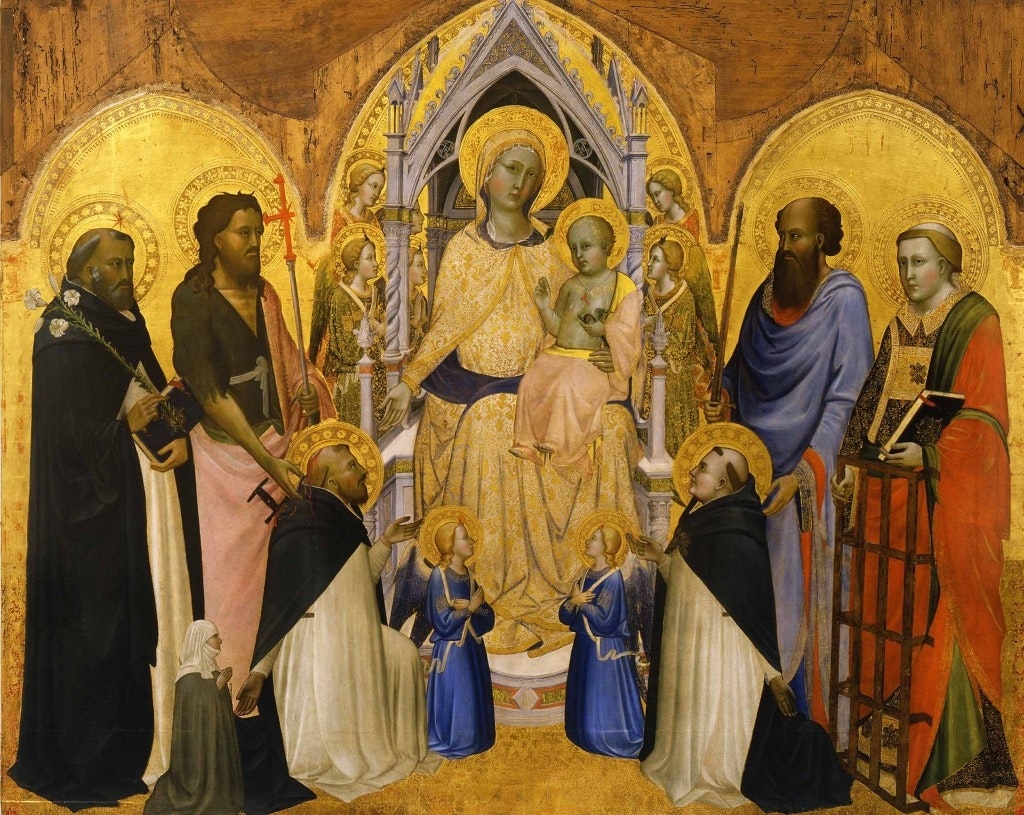
The Altarpiece of the Annunciation and Saints is a painting in tempera and gold on panel (404×381 cm) of Giovanni del Biondo, dating from about 1380-1385 and it is located in the Galleria dell’Accademia in Florence.
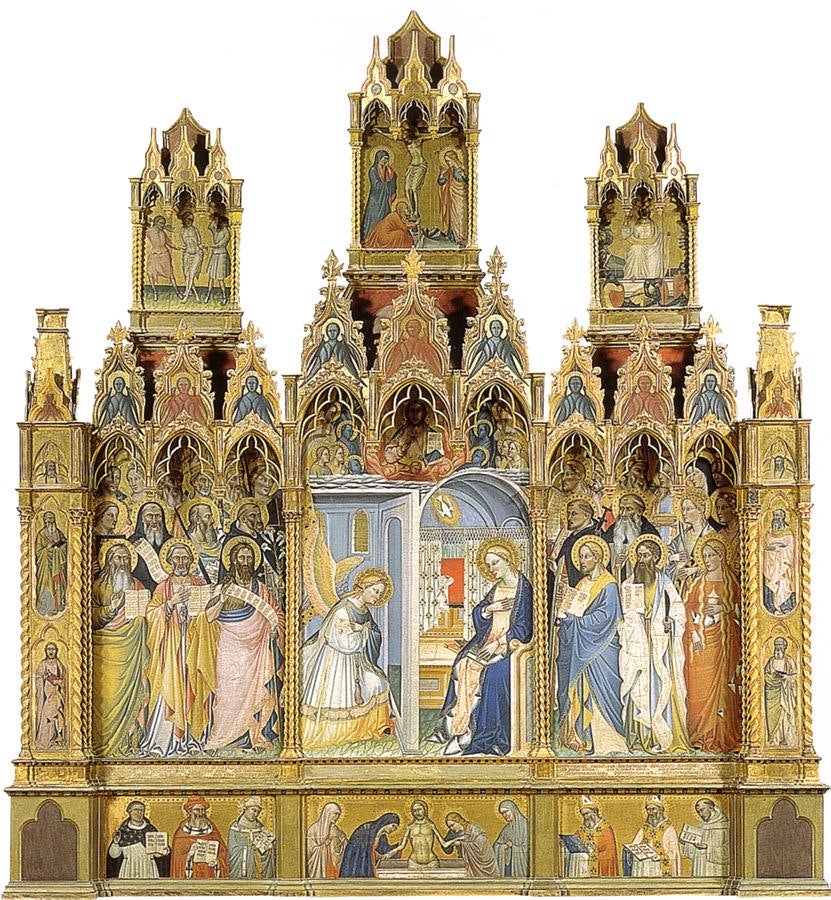
The Adoration of the Magi is a tempera painting on canvas (111×134 cm) by Sandro Botticelli, dating to 1475 and it si stored in the Uffizi Gallery in Florence.
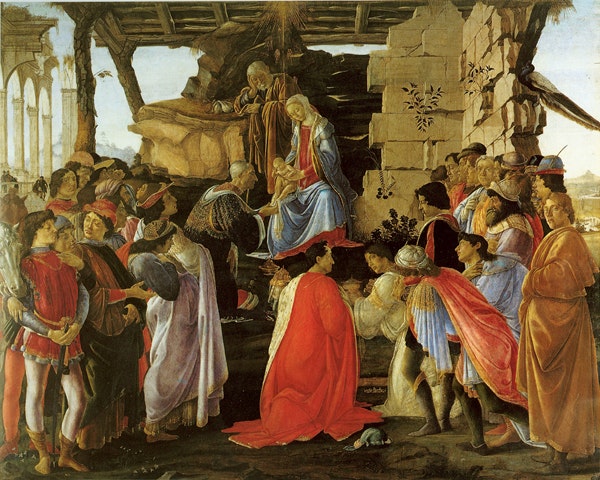
The Pala Tornabuoni is a tempera painting on wood (maximum height 221 cm) by Domenico Ghirlandaio and his workshop, conducted for the central altar of Santa Maria Novella in 1490 and completed after the painter’s death (1494) until 1498 or so. Today is spread up in multiple locations, with the main compartment (Madonna in Glory with Saints) in the Alte Pinakothek of Monaco of Bavaria.
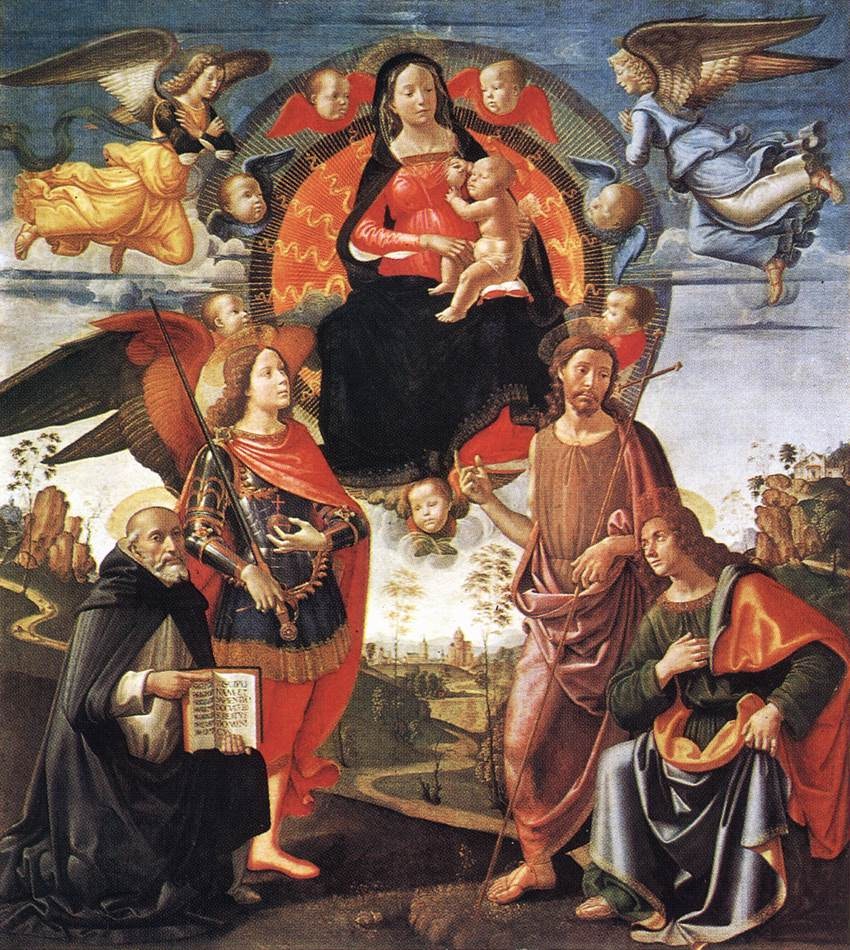
A cantoira of Baccio d’Agnolo made of marble in 1485. Since 1859 it became part of an important English museum: Victoria and Albert Museum in London. It ‘s still one of the most popular pieces of its collection of sculptures.
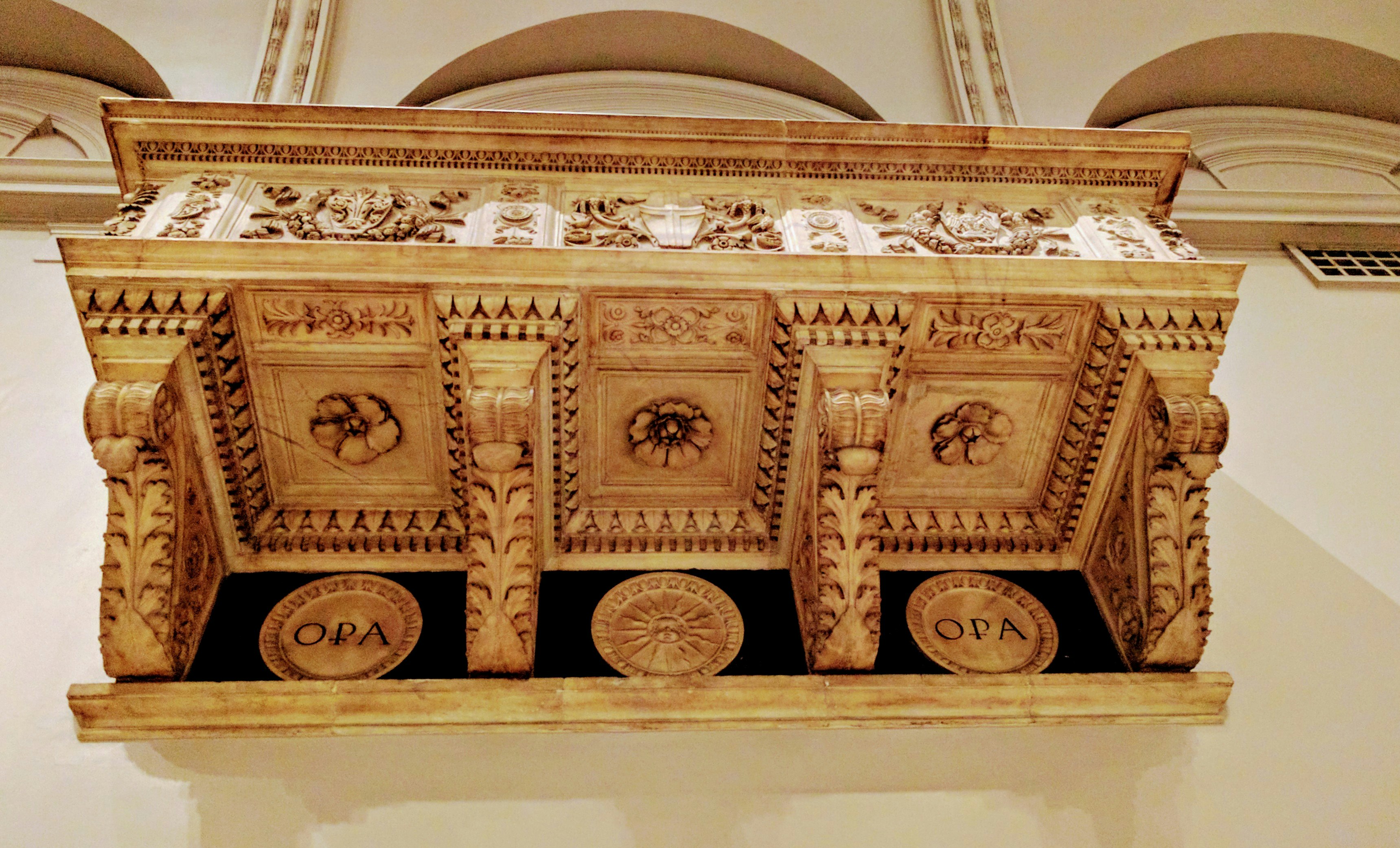
The Vasari Round Case. About sixteenth century, representing “Eternal Father” and attributed to Giorgio Vasari. Currently preserved in the convent of Sant Maria Novella, it is waiting for a suitable exhibition location.
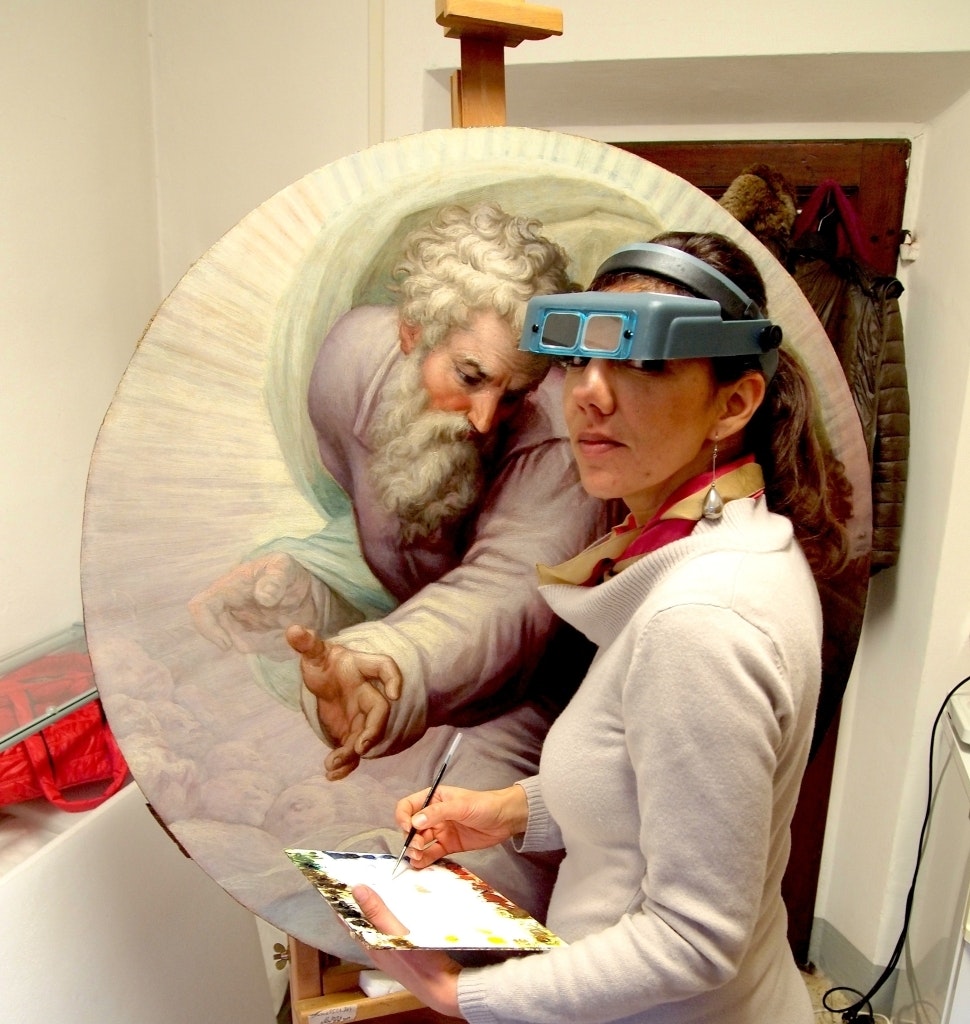
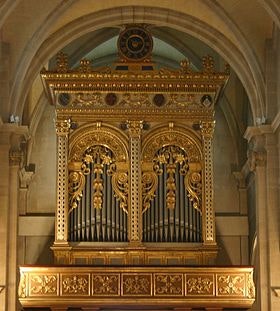
Holy water font of 1302, now kept in Bargello museum, was once placed by Santa Maria Novella's Avelli access on Avelli street. This entry was reserved for the faithful before the restructuring of Giorgio Vasari. However the first work that the faithfuls used to see once entered was the Trinity by Masaccio who followed the act of signing invoking Father, Son and Holy Spirit. The holy water was placed in fact to the use of the faithful who enter to the church.
